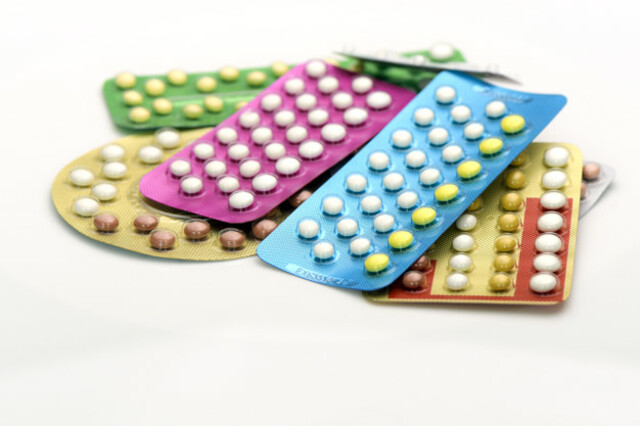“If you wish to have vaginal intercourse, use a condom from the beginning of intercourse. It is a simple and very effective method to prevent sexually transmitted diseases and unwanted pregnancies.”
Irene Bedmar Martín
New contraceptive formulas
The appearance of new formulas allows the doctor to provide a personalized treatment for each woman, according to her needs and lifestyle, which avoids failures in the chosen method.
These are the contraceptive methods currently available:
Chemical Barrier Methods.
These substances must be used in conjunction with condoms and other types of barrier contraceptives that do not contain them.
Male Condom
It is a sheath or covering that envelops the erect penis and forms a barrier that prevents sperm from meeting the egg. It is 98% effective in preventing pregnancy if used correctly and consistently. It also protects against sexually transmitted infections, particularly HIV.
Female Condom
A sheath or liner that fits loosely in the vagina; it is made of a thin, soft, transparent plastic material. It forms a barrier that prevents sperm and egg from meeting. It is 90% effective in preventing pregnancy if used correctly and consistently. It also protects against sexually transmitted infections, particularly HIV.
Diaphragm
It is a rubber or rubber cap with a flexible rim of different sizes that acts as a mechanical obstacle blocking the cervix, thus preventing the entry of sperm. It is 82% to 94% effective in preventing pregnancy. It is important to remember that the diaphragm does not protect against sexually transmitted infections.
Spermicides
Spermicides are classified as chemical barrier methods. They exist on the market in the form of creams, gels and vaginal ovules. They have a double action, on the one hand the active ingredient or spermicidal agent immobilizes or kills the spermatozoa, and on the other hand, the emulsion containing the active substance forms a barrier that blocks the opening of the cervix. They should always be used in combination with other contraceptive methods, as they have very little efficacy on their own.
Implantable Devices
These are devices that are inserted into the body and left in place for several years.
Copper Intrauterine Device (IUD)
A small, flexible plastic device that contains a copper loop or sheath and is inserted into the uterus. The copper damages the sperm and prevents them from joining with the egg. It has an efficacy of >99% in preventing pregnancy. Decreases the frequency of menstrual cramping and symptoms of endometriosis. May cause amenorrhea (absence of menstrual bleeding) in some cases.
Levonorgestrel Intrauterine Device (IUD)
A T-shaped plastic device that is inserted into the uterus and releases small amounts of levonorgestrel daily. It suppresses the growth of the lining of the uterine cavity (endometrium). It has an efficacy of >99% in preventing pregnancy. Decreases menstrual cramps and symptoms of endometriosis; amenorrhea (absence of vaginal bleeding) in 20% of users.
Hormonal Implant
Consists of small, flexible cylinders or capsules that are placed under the skin of the upper arm; contains only progestin. It thickens the mucus in the cervical canal, which prevents sperm and egg from meeting and prevents ovulation. It has an efficacy to prevent pregnancy >99% if used correctly and sustained. Must be inserted and removed by healthcare personnel; can be used for 3 to 5 years, depending on type; irregular vaginal bleeding is common but not harmful.


Hormonal Methods
Prevent pregnancy by interfering with ovulation, fertilization and/or implantation of the fertilized egg. Hormonal contraceptives can be combined or gestagenic:
The “combined” ones contain an estrogen combined with different gestagens and their main contraceptive action is that they inhibit ovulation. They can be administered in pill form, but also by means of a vaginal ring or a patch placed on the skin.
The “gestagenic” contraceptives are the mini-pill, the IUD (which releases hormones) and the subdermal implant (under the skin). This type of contraception acts by inhibiting ovulation, but also by making the cervical mucus hostile to the passage of sperm and preventing implantation of the fertilized egg in the endometrium.
Contraceptive Pill
It is a compound of synthetic hormones similar to the woman’s natural hormones (estrogens and progesterone). By taking them, the pituitary gland stops sending orders to the ovary to produce these hormones, so the ovary is at rest and there is no ovulation, therefore there can be no fertilization, which makes pregnancy impossible. There are different types of contraceptive pills, which vary according to the hormonal dose and the pattern of presentation. Your doctor will be the one to recommend the most suitable for you. Its efficacy, if used correctly, is close to 100%. It has an efficacy to prevent pregnancy >99% if used correctly and sustained. Decreases the risk of endometrial and ovarian cancer; should not be taken while breastfeeding.
- How it works: Taking a combined pill daily inhibits ovulation making it one of the most effective methods of contraception available. If there is no ovulation there can be no pregnancy.
- How to use: The pill should be taken at the same time every day. Depending on the preparations, they should be taken continuously or with breaks of six or seven days. If the presentation is of 28 pills, they should be taken continuously, without breaks: when you finish one package, you start the next one. If the presentation is 21 or 22 pills, they should be taken with an interval of six or seven days of rest between each package. In both cases, the menstrual bleeding will appear with a periodicity of approximately 28 days.
Mini-Pill
Contains only progesterone (no estrogen). It thickens the mucus in the cervical canal, which prevents sperm and egg from meeting and prevents ovulation. It is 99% effective in preventing pregnancy if used correctly and consistently. Between 90% and 97% as commonly used. Can be used while breastfeeding; must be taken every day at the same time.
- How it works: Works by inhibiting ovulation and thickening cervical mucus. It does not affect milk production so it is the hormonal treatment of choice if you are breastfeeding a baby. It exerts worse control over the menstrual cycle than combined pills, thus causing some episodes of light bleeding.
- How to use: There is a single preparation of 28 pills, and one pill should be taken every day at the same time, continuously, without breaks: at the end of one package, the next one is started. Menstrual bleeding is irregular.
Vaginal Ring
Their hormone doses are lower because they do not have to pass through the stomach to pass into the bloodstream and they are also more convenient to use. That is why these new combined hormonal contraceptive methods are a very interesting option to consider as well.
- How it works: A ring of a plastic-like material 5 cm in diameter and 4 mm thick contains hormones similar to those in the contraceptive pill; through small pores in the ring the medication is released and absorbed by the mucosa of the vagina. Side effects and efficacy are like those of the pill.
- How to use: It is inserted into the vagina, like a tampon, 5-7 days after starting the cycle, leaving it in for 21 days; after this time it is removed, left for 7 days of rest and a new one is inserted.
Patches
A small patch, similar to a band-aid, 4.5 cm on each side and less than 1 mm thick, is placed on the skin; this patch contains the hormones, as do the other hormonal methods, and releases them as they are absorbed through the skin.
- How it works: The side effects and efficacy are the same as those of the pill since it is the same hormones, although the route of administration is different.
- How to use: A patch is placed on the skin on the first day of the cycle and changed weekly for three consecutive weeks. After 21 days, when the three patches have been used, we have a week of rest where no patch is applied and it will be the moment when menstrual bleeding will appear. It should be placed in an area of the body without creams so that it does not peel off and never on the breasts; the most suitable sites are the buttock or belly.
Monthly Injectables or Combination Injectable Contraceptives
They are injected intramuscularly every month; they contain estrogen and progestin. Same mechanism as oral contraceptives in combination. Efficacy to prevent pregnancy >99% if used correctly and sustained. Irregular vaginal bleeding is common but not harmful. Gestagenic contraceptives reduce menstrual pain and produce less bleeding, so they are useful in women with heavy bleeding or iron deficiency anemia problems. They also help make cycles regular and relieve premenstrual symptoms.
Permanent Contraceptive Methods
Permanent contraception, sometimes called sterilization, prevents all future pregnancies. It is very difficult or impossible to reverse. Permanent contraception consists of a vasectomy or tubal ligation.
Tubal ligation
It is a surgical procedure performed on the woman, under general anesthesia. It consists of sectioning or blocking the fallopian tubes (with clips, rings or electrocoagulation), which prevents the egg from traveling through the tube towards the uterus and therefore fertilization. It is permanent and irreversible.
Vasectomy
It is a surgical procedure performed on the male with local anesthesia. It consists of cutting or clamping the vas deferens so that the ejaculated semen does not contain sperm.
They are not Contraceptive Methods
- Coitus interruptus or “reverse intercourse”.
- Prolonged breastfeeding.
- Vaginal douching.
- During menstruation.
- Morning-after pill (emergency contraception).










